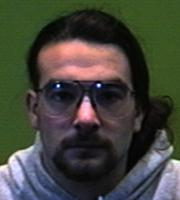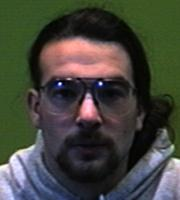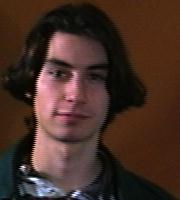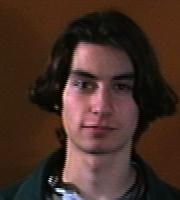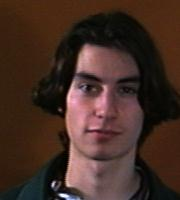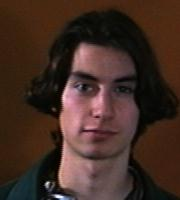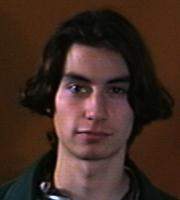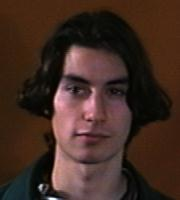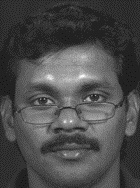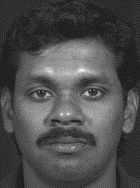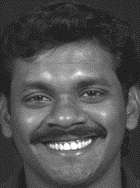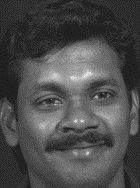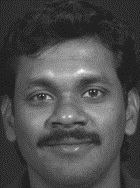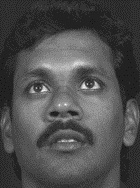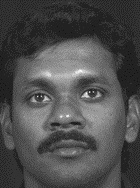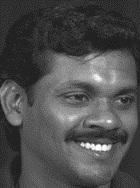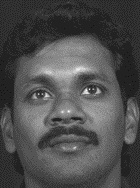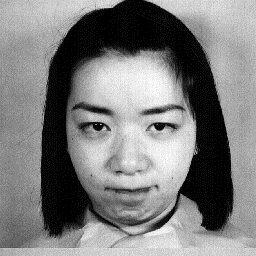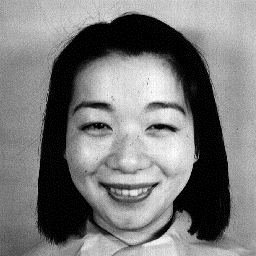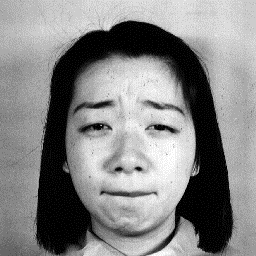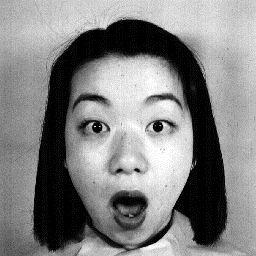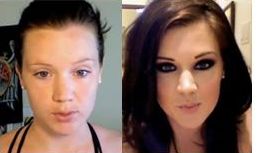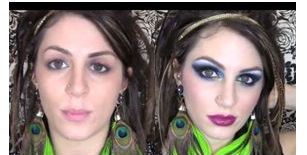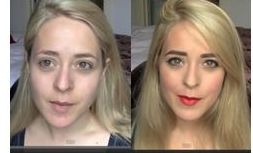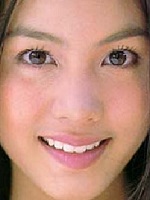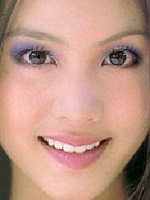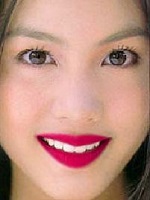Face Recognition Database
There are three main face database types that we used to evaluate our algorithm:
- Frontal Face Database
- Expression Face Database
- Makeup Face Database
| Database |
Subject |
Images per subject |
Total images |
Dimension (Pixels) |
| 1) Frontal Face Database |
|
| Faces94 |
153 |
20 |
3,060 |
180x200 |
| Faces95 |
72 |
20 |
1,440 |
180x200 |
| 2) Expression Face Database |
|
| Senthil |
5 |
16 |
80 |
140x188 |
| Jaffe |
10 |
20-23 |
213 |
256x256 |
| FEI |
200 |
14 |
2800 |
640x480 |
| 3) Makeup Face Database |
|
| YMU |
151 |
4 (2 before and 2 after makeup application) |
604 |
130x150 |
| VMU |
51 |
4 (1 no makeup, 1 lipstick,
1 eye makeup,
1 full makeover) |
204 |
130x150 |
| GMU |
442 |
4 (1 no makeup, 1 lipstick,
1 eye makeup,
1 full makeover) |
1,768 |
201x269 |
1. Frontal Face Database
There are two frontal face databases that used for evaluating our algorithm:
1) Faces94: This database consists of 153 subjects (133 male and 20 female). The variation of individual's images are: (a) the backgrounds is plain green; (b) none head scale; (c) very minor variation in head turn, tilt and slant; (d) minor changes in the position of face in image; (e) none image lighting variation;(f) considerable expression changes; (g) there is no individual hairstyle variation as the images were taken in a single session.
2) Faces95: This dataset consists of 72 (male and female) individuals with 20 images per individual. The background of images consists of a red curtain and also has the background variation that caused by shadows. There are some expression and lighting variation.
The Faces94 and Faces95 databases were provided by Computer Vision Science Research Projects, Dr Libor Spacek.
Click here to view more details of Faces94 and Faces95.
Click here to view/download the Faces94 and Faces95 images.
References
- K. Rujirakul, C. So-In, and B. Arnonkijpanich, "PEM-PCA: A Parallel Expectation-Maximization PCA Face Recognition Architecture," The Scientific World Journal (TSWJ), vol. 2014, 16 pp., 2014. (SCI-E/ISI) (IF=1.219)
- K. Rujirakul, C. So-In, B. Arnonkijpanich, K. Sunat and S. Pualsanguan, "PFP-PCA: Parallel Fixed Point PCA Face Recognition," in Proceedings of International Conference on Intelligent Systems, Modelling and Simulation (ISMS), pp. 409-414, Jan 2013. (IEEE Xplore)
- C. So-In and K. Rujirakul, "wPFP-PCA: Weighted Parallel Fixed Point PCA Face Recognition," International Arab Journal of Information Technology (IAJIT), vol. 13, no. 1, Jan. 2016. (accepted for publications) (SCI-E/ISI) (IF=0.39)
2. Expression Face Database
There are three makekup databases that used for evaluating our algorithm:
1) Senthil: This database contains 80 face images (the website contradicts itself as to whether they are color or black and white) of 5 men. There are frontal views of the faces with different facial expressions, occlusions and brightness conditions. There 16 images of each person.
2) Jaffe (The Japanese Female Facial Expression): This dataset contains 213 images of 7 facial expressions (6 basic facial expressions + 1 neutral) posed by 10 Japanese female models. Each image has been rated on 6 emotion adjectives by 60 Japanese subjects.
3) FEI: The FEI face database is a Brazilian face database that contains a set of face images taken between June 2005 and March 2006 at the Artificial Intelligence Laboratory of FEI in Sao Bernardo do Campo, Sao Paulo, Brazil. There are 14 images for each of 200 individuals, a total of 2800 images. All images are colourful and taken against a white homogenous background in an upright frontal position with profile rotation of up to about 180 degrees. Scale might vary about 10% and the original size of each image is 640x480 pixels. All faces are mainly represented by students and staff at FEI, between 19 and 40 years old with distinct appearance, hairstyle, and adorns. The number of male and female subjects are exactly the same and equal to 100.
 |
| Examples FEI images |
The YMU and VMU databases were provided from Antitza's website.
Click here to view more details of Senthil, Jaffe and FEI.
Click here to view/download the Senthil, Jaffe and FEI images.
References
- K. Rujirakul, C. So-In, and B. Arnonkijpanich, "Weighted Histogram Equalized PEM-PCA Face Recognition," in Proceedings of International Computer Science and Engineering Conference (ICSEC), pp. 144-150, July 2014.(IEEE Xplore)
3. Makeup Face Database
There are three makekup databases that used for evaluating our algorithm:
1) YMU (YouTube Makeup): This database consists of 151 subjects, specifically Caucasian females, from YouTube makeup tutorials. The images was captured from the subjects before and after the application of makeup. There are four shots per subject: two shots before the application of makeup and two shots after the application of makeup. The makeup in these face images varies from subtle to heavy. The cosmetic alteration is mainly in the ocular area, where the eyes have been accentuated by diverse eye makeup products. Additional changes are on the quality of the skin due to the application of foundation and change in lip color. This dataset includes some variations in expression and pose. The illumination condition is reasonably constant over multiple shots of the same subject. In few cases, the hair style before and after makeup changes drastically.
2) VMU (Virtual Makeup): This dataset was assembled by synthetically adding makeup to 51 female Caucasian subjects in the FRGC dataset. The makeup was added by using a publicly available tool from Taaz. Three virtual makeovers was created: (a) application of lipstick only; (b) application of eye makeup only; and (c) application of a full makeup consisting of lipstick, foundation, blush and eye makeup. Hence, the assembled dataset contains four images per subject: one before-makeup shot and three aftermakeup shots.
 |
| Examples VMU images |
3) GMU (Google Makeup): This database was created by adding makeup to 442 subjects. It consists of Asian, Caucasian, and Negroid. A publicly available software, Taaz, was used to perform this alteration. Three virtual makeovers was created: (a) application of lipstick only; (b) application of eye makeup only; and (c) application of a full makeup consisting of lipstick, foundation, blush and eye makeup. Thus, the assembled dataset contains four images per subject: one before-makeup shot and three aftermakeup shots.
The YMU and VMU databases were provided from Antitza's website.
Click here to view/download the YMU and VMU images data.
To download the GMU database, please send the email to chakso@kku. ac. th with the following details:
- Name,
- Affiliation,
- Email address,
- Requested database,
- Reason for the database download.
We will respond to your email and will send you the download details. Thanks for your interest.
Please: CITE the below publication when referencing this material, and also include the standard citation for this database:
References (Please CITE)
- C. So-In and K. Rujirakul, "wPFP-PCA: Weighted Parallel Fixed Point PCA Face Recognition," International Arab Journal of Information Technology (IAJIT), vol. 13, no. 1, Jan. 2016. (SCI-E/ISI)
- K. Rujirakul and C. So-In, "P-PCC: Parallel Pearson Correlation Condition for Robust Cosmetic Makeup Face Recognitions," Lecture Notes in Electrical Engineering, vol. 339, pp. 259-266, 2015. (Springer)
- K. Rujirakul, C. So-In, and B. Arnonkijpanich,"PEM-PCA: A Parallel Expectation-Maximization PCA Face Recognition Architecture," The Scientific World Journal (TSWJ), vol. 2014, 16 pp., 2014. (SCI-E/ISI)



